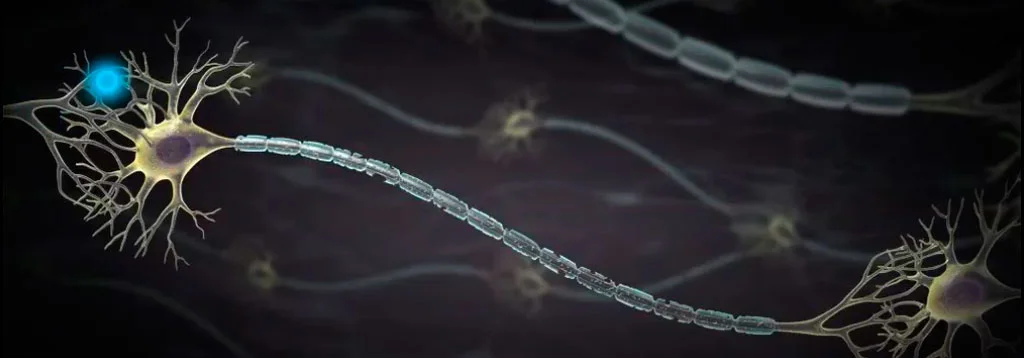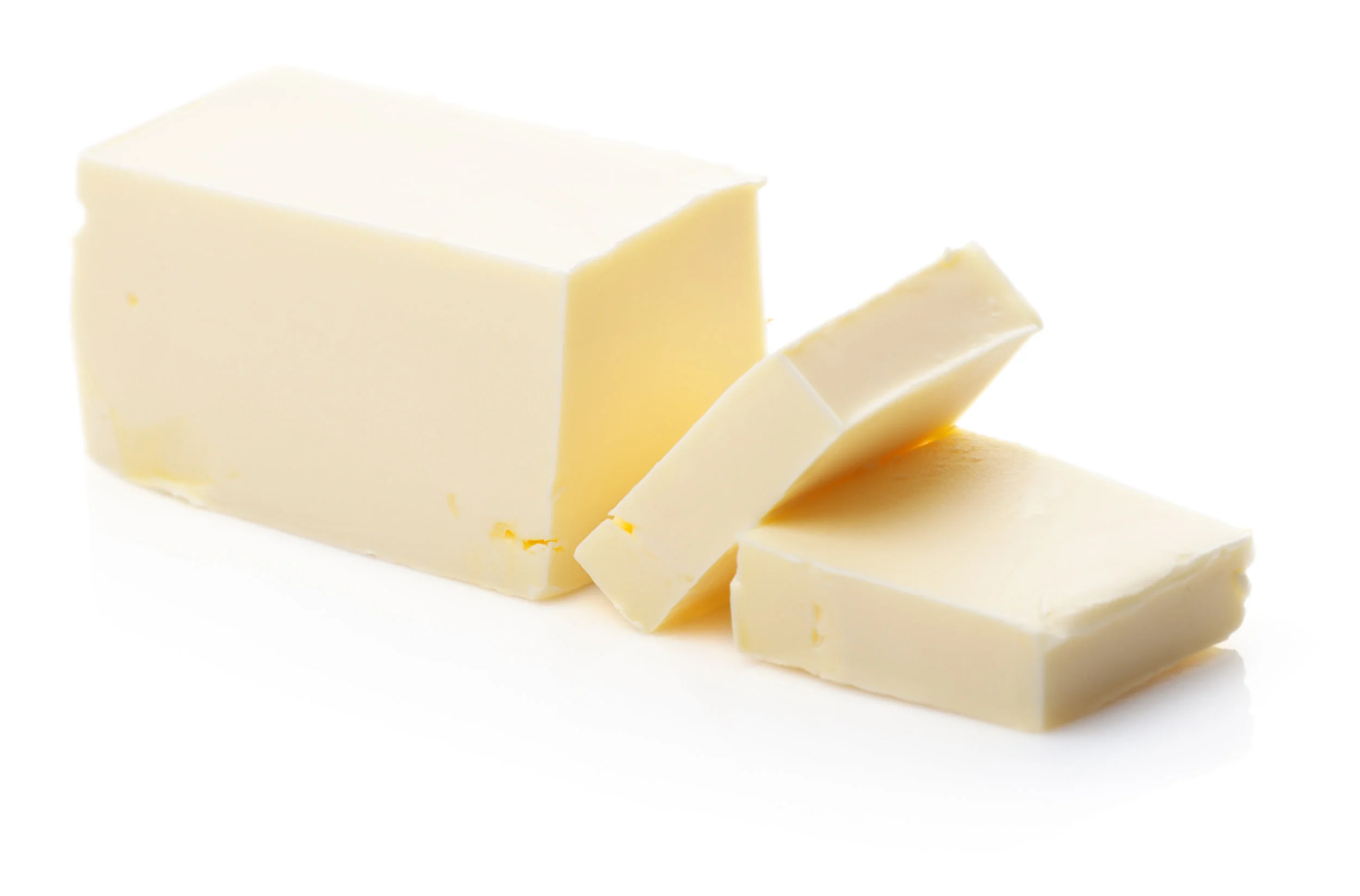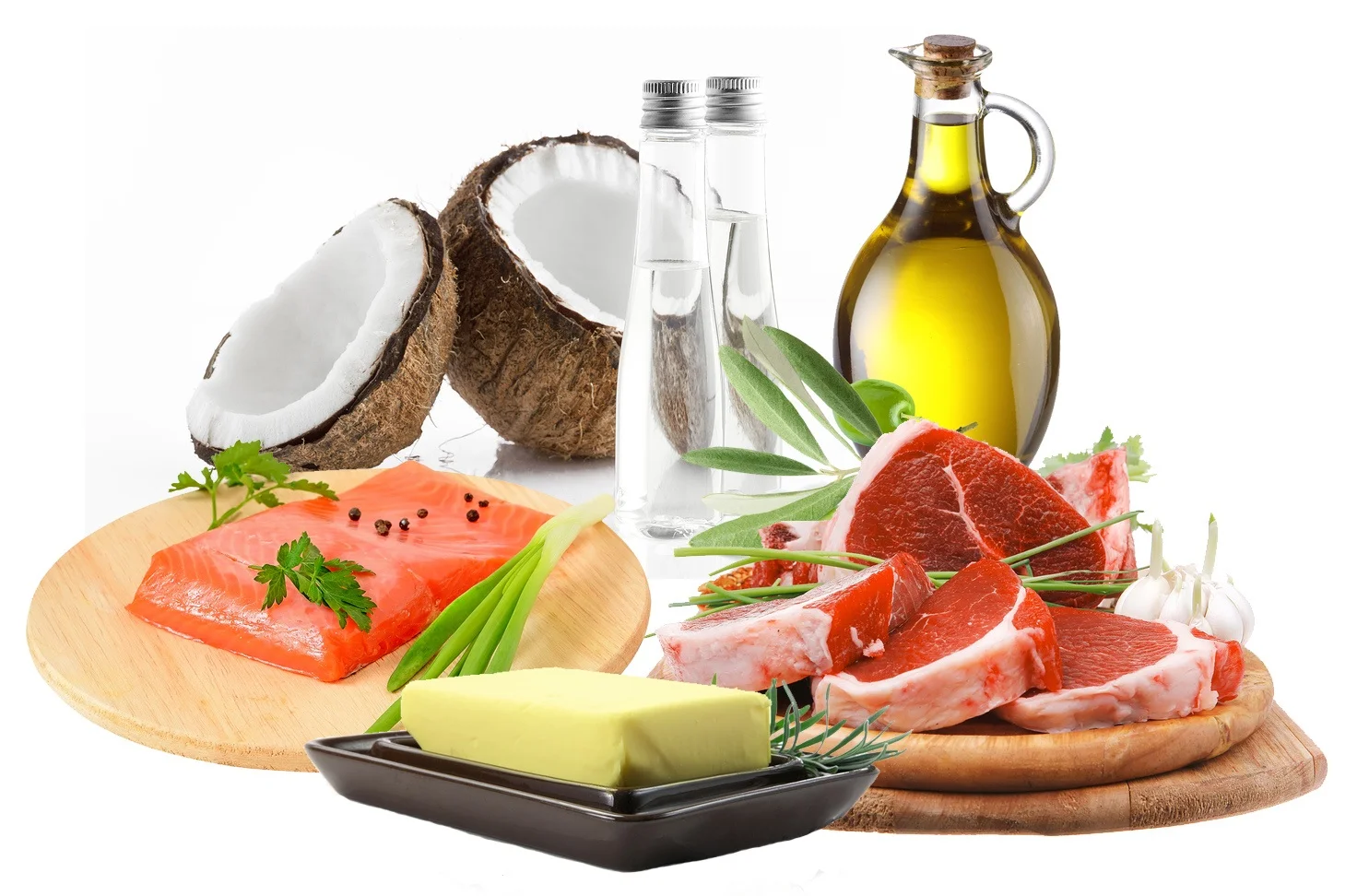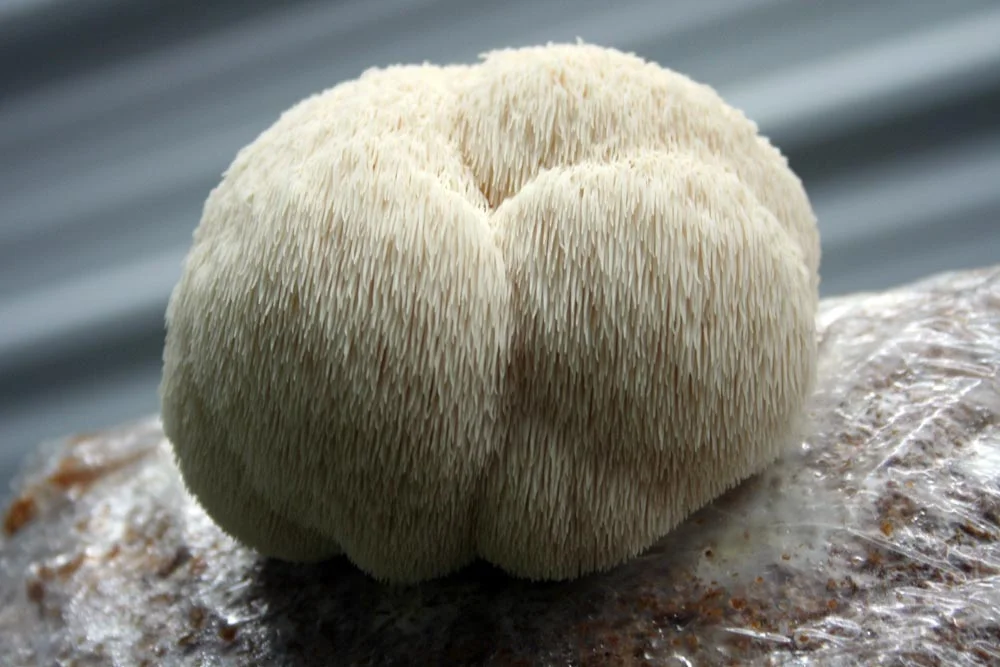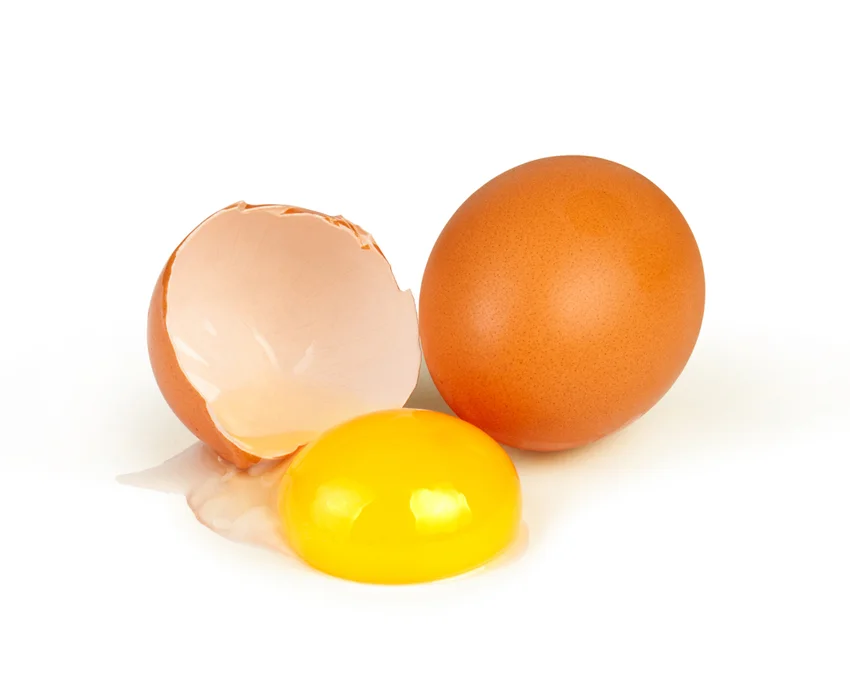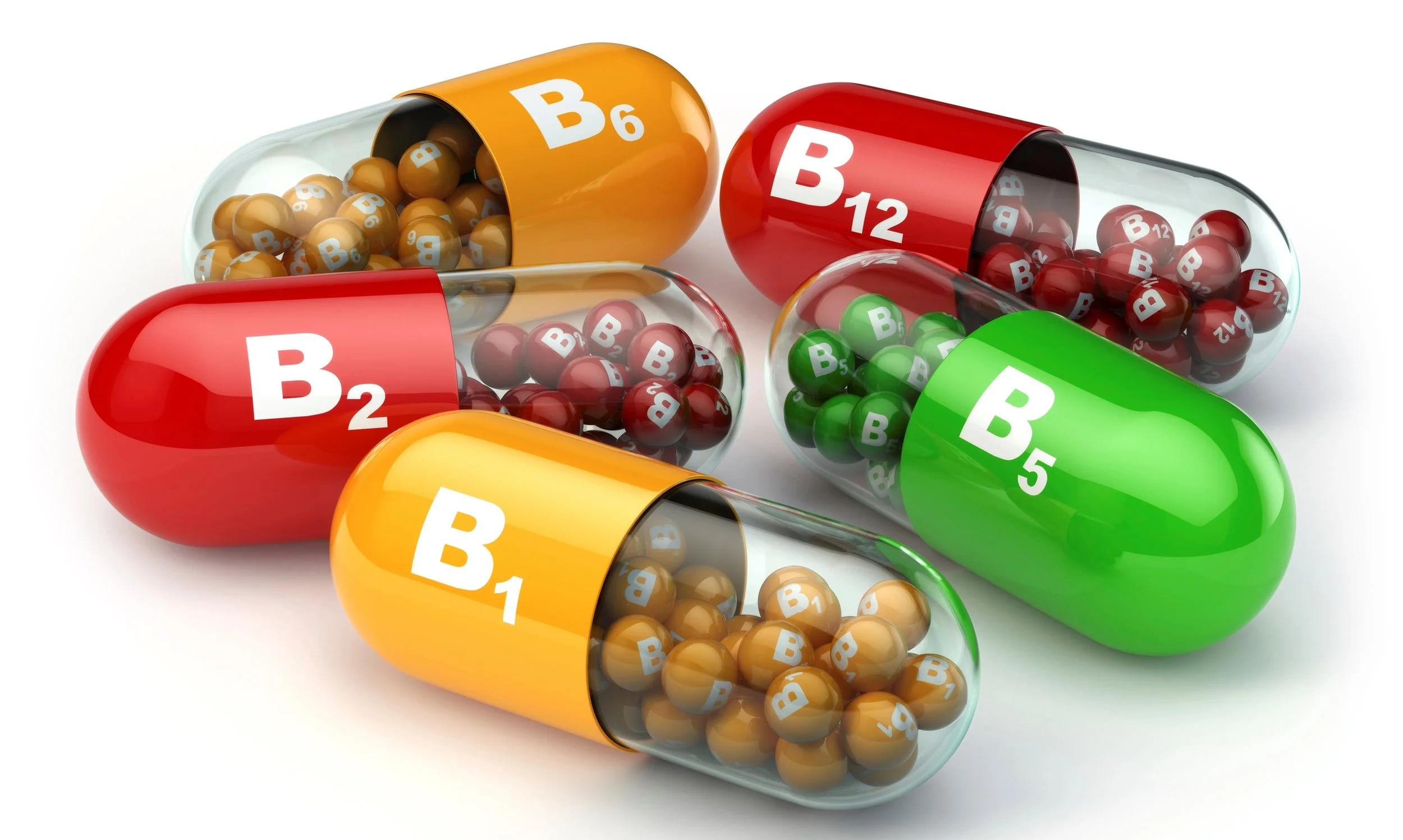Myelin is critical for optimal brain function and mental health.
What is myelin?
Myelin is a fatty, white substance that wraps around the end of many nerve cells. It forms an electrically insulating sheath that increases nerve condition speeds.
In other words, it allows your brain to send information faster and more efficiently, making it absolutely essential for the optimal functioning of your nervous system (39, 40).
So not surprisingly, myelin sheath plays a key role in determining intelligence and improving cognitive performance (41, 42).
The production of myelin throughout the nervous system is called myelination or myelinogenesis.
But demyelination can also happen.
This happens when the myelin that insulates your nerves is destroyed or deteriorates, leading to mental health symptoms and neurodegenerative diseases (44).
Multiple sclerosis is one of the more common demyelinating condition, but a number of neurological and psychiatric illnesses have been linked to demyelination, including (45):
Attention deficit hyperactivity disorder
Bipolar disorder
Dyslexia
Language disorders
Stuttering
Autism
Tourette’s syndrome
Schizophrenia
Tone deafness
Pathological lying
If you have one of these conditions and suspect you might have symptoms of demyelination, don’t worry.
There are dietary and lifestyle modifications that can help your body repair and re-manufacture myelin. Studies show that oligodendrocyte cells are responsible for the formation of new myelin in both the injured and normal adult brains (43).
Here are 28 holistic ways to increase oligodendrocyte cells, promote myelin production and myelin sheath repair, and increase the regeneration of myelin.
1. Deep Sleep and Melatonin
Research has found that sleep increases myelination and increases the production of oligodendrocyte precursor cells (OPCs).
One study found that production of OPCs doubled in mice while they slept. The mice that were forced to stay awake had higher levels of stress hormones and higher rates of brain cell death (1-2).
Researchers believe this means that sleep loss can aggravate symptoms of multiple sclerosis.
That’s why getting at least 7 hours of high-quality, restorative sleep is so critical.
But it’s not just the amount of sleep you get that’s important. It’s also the quality of your sleep.
The researchers found that the production of the myelin-forming cells increased the most during deep, rapid-eye movement (REM) sleep.
Melatonin, your body’s sleep hormone, has also been shown to promote myelination and increase myelin production by significantly reducing inflammation in the brain (46).
This sleep supplement contains magnesium and a number of other natural compounds that I’ve used over the years to promote the production of melatonin.
But I work with my clients so that they can naturally produce more melatonin and maximize the quality of their sleep without so many supplements. We have free online workshop that talks about how you can work with us. You can register for the workshop here.
Deep sleep can also improve your brain’s growth hormone, lower your stress hormone, and slow down the onset of dementia.
2. Iodine and Thyroid Hormones
Iodine is a key mineral that is required to produce thyroid hormones. Without enough iodine, you may end up with symptoms of hypothyroidism.
Research shows that a deficiency in iodine and lack of thyroid hormones can impair myelination (7).
“The process of myelination is known to depend on the thyroid hormone. The myelinating cells are the oligodendroglia which appear to stop functioning in MS (and sometimes to a milder degree in Alzheimer’s disease, and other conditions). The cells’ absorption of thyroid hormone is influenced by dietary factors.”
Other studies show that thyroid hormones stimulate the expression of myelin protein genes, and promote remyelination in the brain by enhancing oligodendrocyte maturation (8, 9).
So supporting your thyroid and getting enough iodine are key steps towards increasing myelin and optimizing the formation of new myelin.
You can read more about how to support your thyroid and enhance the production of thyroid hormones here.
I highly recommend getting a full thyroid panel done regularly.
3. Vitamin C
Vitamin C is known to participate in myelin formation (10, 11).
Collagen synthesis, which is dependent on Vitamin C, has also been linked to the formation of myelin sheath (12, 13).
Vitamin C can be found in foods such as peppers, citrus fruits, green leafy vegetables, broccoli, tomatoes, and berries. These foods are included in my Free Grocery Shopping Guide for Optimal Brain and Mental Health.
You can also take it in supplement form.
4. Zinc
As I’ve discussed before, zinc is an essential trace mineral that activates several hundred enzymatic reactions, including neurotransmission.
It’s estimated that 2 billion people in the world are deficient in zinc, and six different studies show that subclinical deficiency of zinc impairs brain function in children and adults (14-16).
So, if you struggle with a brain or mental health disorder, it’s quite possible that you’re deficient.
Zinc also affects myelination.
The mineral is needed for myelin proteins to work properly, and research shows that a deficiency in zinc leads to a reduction in myelin formation and myelin recovery (17).
Some of the best food sources of zinc include oysters, grass-fed beef, pumpkin seeds, cashews, mushrooms and spinach. These foods are included in my Free Grocery Shopping Guide for Optimal Brain and Mental Health.
But I still recommend at least short-term supplementation to ensure you get enough to increase myelination.
I created and take the Optimal Zinc supplement.
Check out my previous post about zinc and copper if you’re interested in discovering more steps you can take to increase your zinc levels.
5. Cholesterol
Cholesterol is a waxy, fat-like substance that’s found in all cells of the body.
Your body needs cholesterol to make hormones and vitamin D.
And it’s an indispensable component of myelin.
Without it, myelin membrane growth is “severely perturbed” (18).
So just like you shouldn’t be afraid of saturated fat, you shouldn’t be afraid of eating cholesterol-rich foods.
Some of the best sources of cholesterol include grass-fed butter or ghee, beef liver and pastured egg yolks. These foods are included in my Free Grocery Shopping Guide for Optimal Brain and Mental Health.
6. Lithium
Lithium is predominantly known as a medication given to bipolar patients to manage their symptoms.
However, it’s also an essential mineral.
Bipolar patients are often given high doses of lithium carbonate.
But low doses of lithium orotate can be safely supplemented to support the brain and improve mental health.
Research shows that lithium stimulates the expression of myelin genes, restores the myelin structure, and promotes remyelination (19).
As I discussed before, lithium orotate can also increase your brain’s growth hormone (BDNF).
So it’s definitely something you want to consider taking if you want to increase myelin in the brain.
7. Oxygen Therapy
Hyperbaric oxygen therapy (HBOT) is a treatment that enhances healing and recovery after injury to the central nervous system.
Patients inhale 100% oxygen in a total body chamber.
Usually, oxygen is transported throughout the body only by red blood cells. But with HBOT, oxygen is dissolved into all body fluids, including the fluids of the central nervous system.
This leads to oxygen being carried to areas of the body where circulation is diminished or blocked. As a result, extra oxygen can reach all damaged tissues, including areas that need to heal.
Researchers have found that HBOT can cause "significant remyelination" (83-84).
Other studies show that it can alleviate myelin damage (85).
You’ll need to find a practitioner or clinic in your area that provides this treatment.
8. Ketogenic Dieting
A ketogenic diet is a very low-carb diet – less than 50 grams of carbs per day.
When you restrict carbohydrate-rich foods – such as grains, sugar, and even potatoes, legumes and fruit – your body enters ketosis, a metabolic state in which your body and brain run on fatty acids and “ketones” instead of glucose.
Ketones are an alternative source of energy for your brain cells. And several studies show that when you increase the production of ketones, you improve myelination and increase myelin production (3-6).
So if you’re trying to rebuild myelin sheath, you should consider a cyclic ketogenic diet.
As I’ve discussed before, ketones can also increase your brain’s growth hormone, help you overcome brain fog, support your brain’s mitochondria, and slow down cognitive decline.
9. Iron
Iron is an essential mineral that is present in all cells and plays a role in several vital functions, including oxygen consumption and ATP production.
It’s also important for myelin production.
Studies show that low iron levels lead to a reduction in myelination, and normal iron levels support the formation of myelin and increase myelin (20).
In most cases, I don’t recommend supplementing with iron. Instead, get it from food.
Beef liver is the best source, and it’s included in my Free Grocery Shopping Guide for Optimal Brain and Mental Health.
10. Low Level Laser Therapy
Low-level laser therapy (LLLT), or photobiomodulation, is a treatment that uses low-level (low-power) lasers or light-emitting diodes (LEDs) to stimulate brain cells, helping them function better.
Most doctors don't know about LLLT; but not every doctor.
Dr. Norman Doidge, a physician who teaches at the University of Toronto here in Canada, discusses the amazing effects of LLLT in his book The Brain’s Way of Healing.
Researchers have found that LLLT can increase myelination and increase the total number of myelinated axons (79-81).
LLLT has also been shown to restore normal levels of myelin in animals (81-82).
I previously wrote about my experience with low-level laser therapy here.
I use this device and shine the red and infrared light on my forehead for 5 minutes every day. I also shine it on other parts of my head and on my entire body, including on my thyroid, thymus gland and gut. I experience incredible benefits from doing this.
When I’m travelling, I take this smaller and more convenient device with me and shine it on my forehead.
I’ve also been using the Vielight Neuro Duo, which is a transcranial-intranasal headset with 810 nm of near infrared light. It penetrates deeper into brain tissue and is absorbed better by the central nervous system. If you decide to try a Vielight device, you can use the coupon code JORDANFALLIS for a 10% discount
LLLT also supports mitochondria function, reduces brain fog, promotes synaptogenesis, and increases blood flow to the brain.
I encourage you to check out my full article about it for more information.
11. Phosphatidylserine
Phosphatidylserine is a fat-soluble amino acid compound that plays a key role in optimal cognitive function. High amounts of phosphatidylserine can be found within the brain, and supplementation has been shown to improve attention and memory, especially in the elderly (21-23).
“…consumption of phosphatidylserine may reduce the risk of dementia and cognitive dysfunction in the elderly.”
Researchers have also concluded that phosphatidylserine is required for healthy nerve cell membranes and myelin in the brain (24).
I take phosphatidylserine every day. It's part of the Optimal Brain supplement.
Make sure you read this article to learn more about the remarkable benefits of Phosphatidylserine.
12. Pregnenolone
Pregnenolone is a steroidal hormone manufactured by the body, but it can also be taken as a supplement.
It’s been shown to enhance memory and reduce stress-induced fatigue.
It’s the precursor to almost all other steroid hormones, including DHEA, progesterone, testosterone, estrogens, and cortisol.
Pregnenolone and other steroid hormones regulate, repair, rebuild, and increase the production of myelin (25-28).
I personally tried pregnenolone. It did give me a boost in brain function and mental energy. However, it also made me angry and irritable so I stopped taking it. This happens to some people, but a lot of people don't experience this. It's worth trying to see how you react.
13. Uridine
Uridine is a nucleotide base found in beer.
I don’t recommend drinking beer, but supplementing with pure uridine can protect the brain, enhance cognition, and increase mood and motivation.
It’s been proven to help treat “myelin sheath lesion” in several experimental and clinical studies (29, 30).
14. Herbs That Increase Myelin
Ashwagandha is a popular Indian herb commonly used to prevent anxiety.
Withanoside IV is one of the main therapeutic compounds in ashwagandha and research shows that it can increase myelin levels in the nervous system (31).
I take ashwagandha during periods of high stress. It’s included in this supplement.
Ginkgo Biloba is another common herb, which is taken for cognitive enhancement or to alleviate cognitive decline.
It’s beneficial effects of cognition may be because it significantly increases the number of myelinated axons (34).
Ginkgo Biloba is included in the Optimal Brain supplement.
15. Inositol
Inositol is a small molecule structurally similar to glucose that is involved in cellular signalling.
At high doses, it reduces anxiety.
Research shows that animals treated with inositol have significantly fewer demyelinating lesions (32).
I took high doses of inositol powder when weening off psychiatric medication.
I previously wrote a full article about inositol here.
16. Lion’s Mane
Hericium Erinaceus – better known as Lion’s mane mushroom – might be my favourite way to regenerate myelin.
Research shows that lion’s mane increases the rate of myelination production, and the process of myelination begins earlier in the presence of the mushroom (33).
I used to take this lion’s mane mushroom. It’s one of the highest-quality lion’s mane mushroom supplements that I could find from a reputable brand. I spent a lot of time researching and looking into different sources because not all lion's mane supplements are high-quality and effective, and I settled on this one.
17. Consume Flavonoids
There are several flavonoids, a diverse group of phytonutrients found in fruits and vegetables, that have been demonstrated to promote myelination.
Research shows that the flavonoids luteolin, quercetin and fisetin significantly decrease myelin phagocytosis and may be able to limit the demyelination process during multiple sclerosis (35).
Quercetin, one plant flavonoid in particular with potent antioxidant action, has been shown to increase the number of oligodendrocyte precursor cells and myelin basic protein cells (36).
18. Learn or Experience Something New
You can also generate new myelin by learning something new and exposing yourself to novel life experiences.
For example, one report showed that learning a new instrument leads to increased myelin in areas of the brain involved with musical performance.
The researchers explain that myelin increased proportionately to the number of hours each person had practiced the instrument (38).
So the more you practice and try to learn something, the more myelin you generate.
19. Exercise
I’ve already discussed how exercise increases your brain’s growth hormone, supports your brain’s mitochondria, helps reverse cognitive decline, and stimulates your vagus nerve.
It clearly does so much good, so it’s not too surprising that it also supports myelin formation.
Research shows that long-term exercise improves memory by increasing and restoring myelin (47).
Running has also been shown to increase myelination and delay the progression of demyelination, and therefore delays the progression of Alzheimer’s disease (48).
Lastly, researchers have found that exercise increases mitochondrial activity, which then increases myelination in the brain (49).
This is exercise routine I try to follow consistently:
Lift heavy weights 1-4 times per week
High-intensity interval sprinting 1-2 times per week
Walk as much as I can (ideally 30-60 minutes every day)
Walking, weightlifting and sprinting are the best forms of exercise, but you should choose a sport or exercise routine that you enjoy, so that you’ll stick with it consistently
20. Brain-Derived Neurotrophic Factor (BDNF)
Brain-derived neurotrophic factor, also known as BDNF, is a naturally-occurring hormone in the brain that improves brain function and lowers your risk of mental disease.
It also regulates the myelination process.
Research shows that BDNF produces a long-term increase in both the rate and extent of myelination, and enhances and accelerates myelin formation (50).
I previously provided 21 ways to boost BDNF in this post.
21. Testosterone
When I lived in a moldy home, suffered multiple concussions and was placed on antidepressants, my testosterone plummeted.
No conventional doctor tested my testosterone because they assumed every a man in his 20s would have healthy levels.
But they were wrong.
Eventually I saw a smart doctor and he found out that I had the testosterone levels of an old man.
I was put on testosterone replacement therapy for almost one year to get my levels back to normal. And over that time, I saw a huge increase in my brain and mental health.
This may be because testosterone has been shown to stimulate the formation of new myelin and reverse myelin damage (51).
Researchers have also concluded that hormone replacement should be a considered treatment for males who have multiple sclerosis, as it can stall (and perhaps even reverse) the neurodegeneration associated with MS (52).
That's why it's so important to test. Make sure you check both total testosterone and free testosterone.
You can test your total and free levels here.
22. Omega-3 Fatty Acids
Omega-3 fatty acids are essential fats that your body cannot produce itself. They are found primarily in fish and are necessary for the normal electrical functioning of your brain and nervous system.
They appear in most of my posts because they are so critical for brain and mental health and affect so many aspects of wellness.
They’ve been shown to help people overcome addiction, repair the blood-brain barrier, stimulate the vagus nerve, and even reverse cognitive decline.
And now researchers have found that they also increase myelin production, helping your body produce more myelin (53, 54).
According to Judy Graham, author of the book Managing Multiple Sclerosis Naturally: A Self-Help Guide to Living with MS, myelin cell membranes that contain omega-3 fatty acids are more fluid, which improves the efficiency of nerve impulse conduction.
She also points out in her book that rates of multiple sclerosis are lower in areas of high fish consumption.
I eat lots of wild salmon and sometimes supplement with krill oil.
23. Vitamin D and Vitamin K2
Vitamin D is a fat-soluble vitamin that our skin synthesizes when exposed to the sun.
Research shows that the Vitamin D receptor boosts the regeneration of myelin (55).
Vitamin D also significantly increases myelination in rats (56).
It’s best to get your Vitamin D from sunlight, but most people can’t get enough, especially during the winter.
That’s why I take a Vitamin D3 supplement.
If you decide to supplement, it’s a good idea to also take some Vitamin K2 with it, as it has also been shown to support myelin (57).
I also highly recommend checking your Vitamin D levels. It's one of the most important tests you can take for your health.
24. Choline
Choline is an essential B vitamin that most people don’t consume enough of, because very few foods in the Western diet contain it.
It’s also a component of myelin and supports myelin production.
Research shows that the choline pathway promotes remyelination, and enhances the repairing and rebuilding of myelin sheath (64).
Citicoline (also known as CDP-Choline) is the most bioavailable form of choline.
One study found that citicoline enhances myelin regeneration and increases remyelination in the central nervous system. The researchers concluded that citicoline could become a promising substance for patients with multiple sclerosis because of its regenerative action combined with its excellent safety profile (63).
That’s why I recommend supplementing with it. It’s one of my favourite supplements for optimal brain and mental health. I personally take citicoline every day now, and I find it improves my focus and mental energy. It's included in the Optimal Brain supplement.
You can also find some choline in beef liver and egg yolks, but citicoline is more impactful.
And as I’ve discussed before, citicoline can also help you overcome brain fog and support the blood brain-barrier.
Make sure you read this article to learn more about the remarkable benefits of Citicoline.
25. Reduce Inflammation
Reducing inflammation throughout your entire body is a key step towards protecting and regenerating myelin.
Researchers have found that inflammatory cytokines reduce myelination, and high levels of inflammation are often found in people with multiple sclerosis (65).
The best way to reduce inflammation is by following an anti-inflammatory diet.
You should strive to eliminate all gluten, refined carbohydrates (particularly flour), and processed food from your diet, and increase your intake of vegetables, fruits, wild fish, grass-fed beef and pastured chicken.
My free Grocery Shopping Guide for Optimal Brain Health contains a bunch of healthy anti-inflammatory foods that you can eat on a regular basis.
Taking curcumin and krill oil supplements can also significantly reduce inflammation in the body and brain.
Make sure you also check out this article for 23 effective ways to reduce inflammation in the brain.
26. B Vitamins and Methylation
A number of different B vitamins can increase myelin and help your body regenerate myelin.
Vitamin B12 plays a key role in the generation and function of myelin.
Researchers have found that low vitamin B12 levels are significantly associated with myelin degeneration (66, 68).
Other studies have also shown that people with multiple sclerosis often have abnormally low levels of vitamin B12, and vitamin B12 injections significantly improve their symptoms (67).
According to Dr. Perlmutter, author of Brain Maker and Grain Brain, vitamin B12 deficiency enhances the destruction of myelin and compromises the ability of the body to repair and rebuild damaged myelin sheath.
Folate is another B vitamin that plays an important role in the maintenance of myelin. Studies have shown that a deficiency can lead to reduced levels of myelin (69-70).
S-adenosylmethionine (SAMe) isn’t a B vitamin, but along with folate and B12, it is involved with methylation, and has been shown to increase the development of myelin (71).
One amazing study found that biotin (Vitamin B7) activates enzymes involved in myelin synthesis and 91% of patients with multiple sclerosis improved with high doses of biotin. Two multi-centric double-blind placebo-controlled trials are currently underway (72).
Lastly, pantothenic acid (Vitamin B5) can indirectly help with myelin formation because it helps with the synthesis of fatty acids and myelin is mostly made up of fat. Myelin has been shown to degenerate in chickens that are deficient in B5 (73).
27. Probiotics and Prebiotics
It is estimated that 100 trillion bacteria, and 500 to 1,000 species of bacteria, live in the human gut.
These gut bacteria, collectively known as the gut microbiome, help with digestion.
But an increasing amount of research suggests that gut bacteriaalso communicate with your brain through the microbiome-gut-brain axis.
And probiotics and prebiotics can improve your brain health and support myelin production by actually changing the mixture of bacteria in your gut.
Probiotics are live microorganisms with health benefits when consumed, generally by improving or restoring the gut microbiome.
Meanwhile, prebiotics are substances that humans can't digest, so they pass through our gastrointestinal tract and promote the growth of many different strains of good bacteria in your gut. Essentially, prebiotics are food for the probiotics in your intestines.
Research has found that your gut microbes affect the structure and function of the brain by regulating myelination. Probiotics and prebiotics can help upregulate the genes linked to myelination and myelin plasticity (86).
Prebiotic-rich foods include sweet potatoes, carrots, onions, asparagus and squash. These foods are included in my free grocery shopping guide and you should try to eat them as much as possible.
To increase my probiotic intake, I take Optimal Biotics, which is a premium probiotic supplement that improves my mental health.
I also like to drink kombucha and eat fermented foods regularly.
Check out this article to learn more about probiotics and prebiotics, and how you can use them to improve your brain function.
28. Reduce Exposure to Electromagnetic Fields (EMFs)
“I have no doubt in my mind that, at the present time, the greatest polluting element in the Earth’s environment is the proliferation of electromagnetic fields.” - Dr. Robert Becker, Nobel Prize nominee and author of The Body Electric: Electromagnetism And The Foundation Of Life
You won't hear many people talk about this but it needs to be acknowledged.
An increasing amount of research is showing that electromagnetic frequencies emitted from Wi-Fi, laptops, and cellphones can negatively affect the brain and produce widespread neuropsychiatric effects including depression (59).
It’s an inconvenient truth that needs to be talked about, rather than downplayed, ignored and dismissed.
Some people are more sensitive to them than others. I’m one of them.
Two environmental doctors have told me that I’m sensitive to environmental radiation, and some of my symptoms can be traced back to EMF hypersensitivity. It's likely why I benefited so much from neurofeedback, as EMFs can affect brainwaves (74-78).
I suspect a lot of people are dealing with the same problem.
This research paper explains that there is an association between EMF exposure and myelin deterioration, which may account for many of the symptoms that people with EMF hypersensitivity experience (58).
So if you’re trying to rebuild myelin, it’s a good idea to limit your exposure to EMFs.
How do you that?
I'm still learning about how to manage and combat them, but here are some initial steps you can take:
Get an EMF meter to determine your exposure. I use this one. It's the best option that is currently available. It measures electric, magnetic and radiofrequency fields. It's like having three meters in one.
Put your phone on airplane mode when you’re not using it. Or use a radiation-blocking phone case such as Safe Sleeve. I did a lot of research into radiation-blocking cases and Safe Sleeve is the best on the market. They are manufactured with materials that have been 3rd-party tested to block 99.9% of radiation coming off a cell phone.
Turn off Wi-Fi at night while you’re sleeping.
If you have a laptop, don’t touch it. Use a wired keyboard and wired mouse instead.
Supplement with the herb Rhodiola. It has radioprotective effects (60-62). I previously wrote about Rhodiola here.
This is just the tip of the iceberg. There are many other steps you can take, and I plan on writing more about this soon because it isn’t discussed enough.
This may seem like “woo-woo” but it’s a real issue. And I suspect it will eventually become one of the biggest issues of our time.
Conclusion
You don’t have to let your brain deteriorate over time.
You have the power to maintain it and rebuild the myelin within it.
Overall, the above 27 steps can help your body regenerate myelin. They have really helped me.
I hope you implement some of them into your daily life and you notice your brain functions more optimally.
Enjoy This Article? You Might Also Like My FREE Food Guide for Optimal Brain Health!
References:
(1) https://www.ncbi.nlm.nih.gov/pmc/articles/PMC3874087/
(2) http://www.bbc.com/news/health-23932577
(3) https://www.ncbi.nlm.nih.gov/pubmed/20504680
(4) https://www.ncbi.nlm.nih.gov/pubmed/26401995
(5) https://www.ncbi.nlm.nih.gov/pubmed/3884391
(6) http://www.jbc.org/content/249/1/72.full.pdf
(7) https://www.ncbi.nlm.nih.gov/pubmed/21802524
(8) https://www.ncbi.nlm.nih.gov/pubmed/26725831
(9) https://www.ncbi.nlm.nih.gov/pubmed/1383426
(10) http://www.ncbi.nlm.nih.gov/pmc/articles/PMC4179190/
(11) https://www.ncbi.nlm.nih.gov/pubmed/3624305/
(12) https://www.ncbi.nlm.nih.gov/pmc/articles/PMC2649700/
(13) https://www.ncbi.nlm.nih.gov/pubmed/3624305/
(14) http://www.ncbi.nlm.nih.gov/pubmed/22664333
(15) http://www.ncbi.nlm.nih.gov/pubmed/21939673
(16) http://www.ncbi.nlm.nih.gov/pubmed/22673824
(17) https://www.ncbi.nlm.nih.gov/pubmed/1382522
(18) https://www.ncbi.nlm.nih.gov/pubmed/15793579
(19) https://www.ncbi.nlm.nih.gov/pubmed/22355115
(20) https://www.ncbi.nlm.nih.gov/pubmed/18837051
(21) http://www.ncbi.nlm.nih.gov/pubmed/22017963
(22) http://www.ncbi.nlm.nih.gov/pubmed/21103034
(23) http://www.ncbi.nlm.nih.gov/pubmed/20523044
(24) https://www.ncbi.nlm.nih.gov/pubmed/25933483
(25) https://www.ncbi.nlm.nih.gov/pubmed/18373277
(26) https://www.ncbi.nlm.nih.gov/pubmed/9291163
(27) https://www.ncbi.nlm.nih.gov/pmc/articles/PMC4237628/
(28) https://www.ncbi.nlm.nih.gov/pmc/articles/PMC3274763/
(29) https://www.ncbi.nlm.nih.gov/pubmed/24835269
(30) http://wurtmanlab.mit.edu/static/pdf/1037.pdf
(31) https://www.ncbi.nlm.nih.gov/pubmed/18670181
(32) http://jnen.oxfordjournals.org/content/65/1/37.long
(33) https://www.ncbi.nlm.nih.gov/pubmed/12675022
(34) https://www.ncbi.nlm.nih.gov/pubmed/15381788
(35) https://www.ncbi.nlm.nih.gov/pubmed/12628496
(36) https://www.ncbi.nlm.nih.gov/pubmed/24519463
(37) http://journals.plos.org/plosone/article?id=10.1371/journal.pone.0066079
(38) https://www.ncbi.nlm.nih.gov/pmc/articles/PMC2486416/
(39) https://www.ncbi.nlm.nih.gov/books/NBK27954/
(40) https://www.ncbi.nlm.nih.gov/pmc/articles/PMC3820973/
(41) http://www.sciencedirect.com/science/article/pii/0191886994900493
(42) http://www.sciencedirect.com/science/article/pii/0191886994900493
(43) https://www.ncbi.nlm.nih.gov/pmc/articles/PMC2799635/
(44) https://www.ncbi.nlm.nih.gov/pmc/articles/PMC1860500/
(45) https://www.ncbi.nlm.nih.gov/pmc/articles/PMC2486416/
(46) https://www.ncbi.nlm.nih.gov/pubmed/20856166
(47) https://www.ncbi.nlm.nih.gov/pubmed/27026692
(48) https://www.ncbi.nlm.nih.gov/pubmed/25817255
(49) https://www.ncbi.nlm.nih.gov/pubmed/26826016
(50) https://www.ncbi.nlm.nih.gov/pubmed/15352212
(51) https://www.ncbi.nlm.nih.gov/pubmed/23365095
(52) https://www.ncbi.nlm.nih.gov/pubmed/24634831
(53) http://wurtmanlab.mit.edu/static/pdf/1037.pdf
(54) https://www.ncbi.nlm.nih.gov/pmc/articles/PMC4772061
(55) https://www.sciencedaily.com/releases/2015/12/151207095956.htm
(56) https://www.ncbi.nlm.nih.gov/pubmed/25261104
(57) https://www.ncbi.nlm.nih.gov/pmc/articles/PMC2891353/
(58) https://www.ncbi.nlm.nih.gov/m/pubmed/25205214/
(59) http://www.sciencedirect.com/science/article/pii/S0891061815000599
(60) https://www.ncbi.nlm.nih.gov/pubmed/16822199
(61) https://www.ncbi.nlm.nih.gov/pmc/articles/PMC3148626/
(62) https://www.ncbi.nlm.nih.gov/pubmed/16013456
(63) http://www.ncbi.nlm.nih.gov/pubmed/25524711
(64) https://www.ncbi.nlm.nih.gov/pmc/articles/PMC4625486/
(65) https://www.ncbi.nlm.nih.gov/pubmed/9482240
(66) http://jnnp.bmj.com/content/early/2008/10/31/jnnp.2008.149286
(67) http://www.lifeextension.com/protocols/neurological/multiple-sclerosis/Page-02
(68) https://www.ncbi.nlm.nih.gov/pmc/articles/PMC3137939/
(69) https://www.ncbi.nlm.nih.gov/pubmed/641593
(70) https://www.ncbi.nlm.nih.gov/pubmed/20090312
(71) https://www.ncbi.nlm.nih.gov/pubmed/24607226
(72) http://www.sciencedirect.com/science/article/pii/S2211034815000061
(73) http://lpi.oregonstate.edu/mic/vitamins/pantothenic-acid
(74) https://www.ncbi.nlm.nih.gov/pmc/articles/PMC4459698/
(75) https://www.ncbi.nlm.nih.gov/pmc/articles/PMC3614696/
(76) https://www.ncbi.nlmnih.gov/pubmed/14995060
(77) https://www.ncbi.nlm.nih.gov/pubmed/12464096
(78) https://www.ncbi.nlm.nih.gov/pubmed/12881192
(79) https://www.ncbi.nlm.nih.gov/pmc/articles/PMC3065857/
(80) https://www.ncbi.nlm.nih.gov/pubmed/17603852/
(81) https://www.ncbi.nlm.nih.gov/pmc/articles/PMC5642176/
(82) https://www.ncbi.nlm.nih.gov/pubmed/20976807
(83) https://www.ncbi.nlm.nih.gov/pmc/articles/PMC4029808/
(84) https://www.ncbi.nlm.nih.gov/pubmed/24848795
(85) https://www.ncbi.nlm.nih.gov/pubmed/16522237

